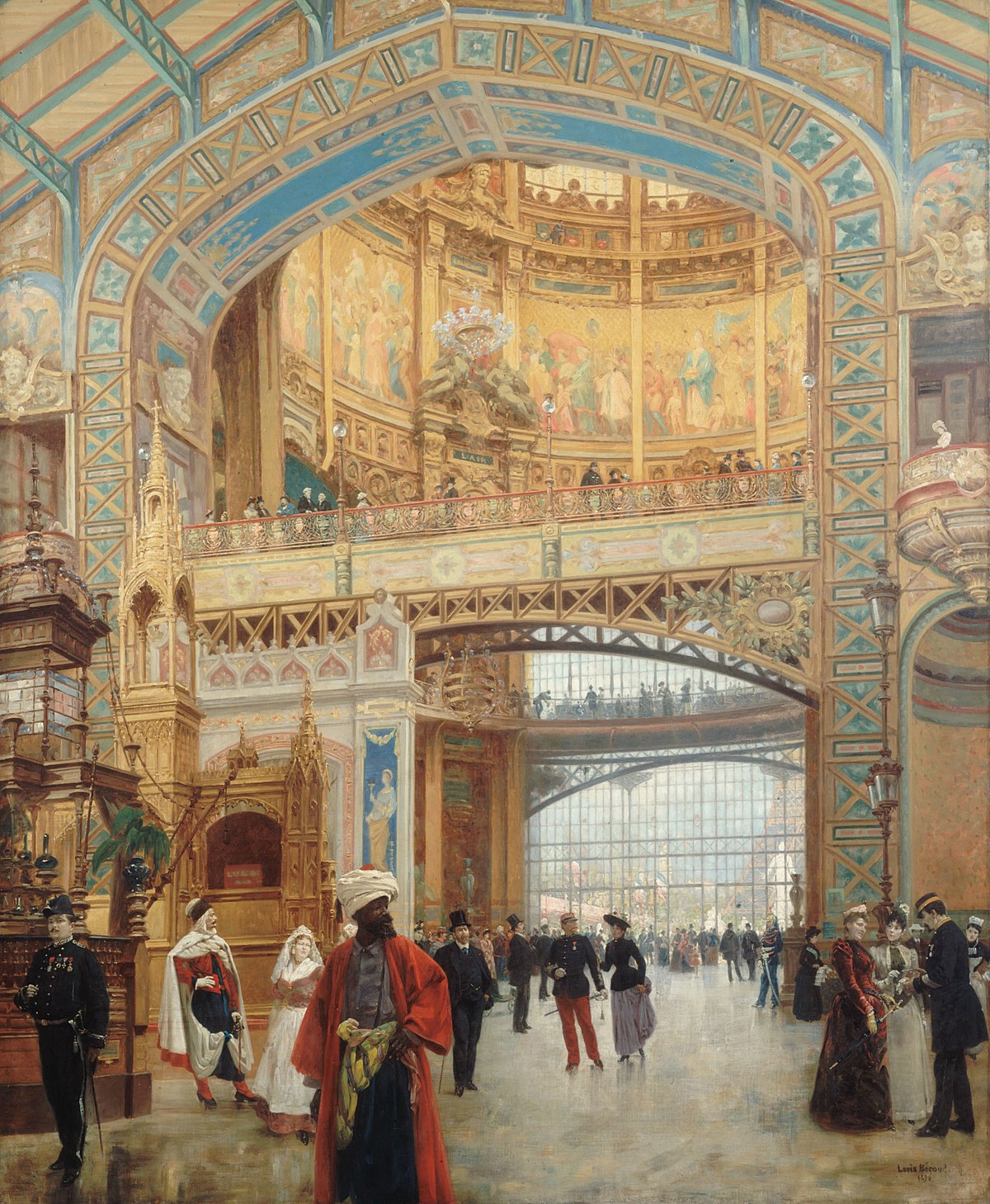
Paris Universal Expositions
Eiffel Tower, Avenue Anatole FIn the second half of the 19th century, Paris hosted five international expositions that attracted millions of visitors and made Paris an increasingly important center of technology, trade, and tourism. The Expositions celebrated the cult of technology and industrial production, both through the impressive iron architecture in which the exhibits were displayed and the almost demonic energy of machines and installations in place.
The first was the Universal Exposition of 1855, hosted by Napoleon III, held in the gardens next to the Champs Élysées. It was inspired by the London's Great Exhibition in 1851 and was designed to showcase the achievements of French industry and culture. The classification system of Bordeaux wines was developed especially for the Exposition. The Théâtre du Rond-Point next to the Champs Élysées is a vestige of that exposition.
The Paris International Exposition in 1867. Famous visitors included Czar Alexander II of Russia, Otto Von Bismarck, Kaiser William I of Germany, King Louis II of Bavaria and the Sultan of the Ottoman Empire, the first foreign trip ever made by an Ottoman ruler. The Bateaux Mouches excursion riverboats made their first journeys on the Seine during the 1867 Exposition.
The Universal Exposition of 1878 took place on both sides of the Seine, in the Champ de Mars and the heights of Trocadéro, where the first Palais de Trocadéro was built. Alexander Graham Bell displayed his new telephone, Thomas Edison presented his phonograph, and the head of the newly-finished Statue of Liberty was displayed before it was sent to New York to be attached to the body. In honor of the Exposition, the Avenue de l’Opéra and Place de l’Opéra were lit with electric lights for the first time. The Exposition attracted thirteen million visitors.
The Universal Exposition of 1889, which also took place on the Champ de Mars, celebrated the centenary of the beginning of the French Revolution. The most memorable feature was the Eiffel Tower, 300 meters tall when it opened (now 324 with the addition of broadcast antennas), which served as the gateway to the Exposition. The Eiffel Tower remained the world's tallest structure until 1930. It was not popular with everyone: its modern style was denounced in public letters by many of France's most prominent cultural figures, including Guy de Maupassant, Charles Gounod and Charles Garnier. Other popular exhibits included the first musical fountain, lit with colored electric lights, changing in time to music. Buffalo Bill and sharpshooter Annie Oakley drew large crowds to their Wild West Show at the Exposition.
The Universal Exposition of 1900 celebrated the turn of the century. It also took place at the Champ de Mars and attracted fifty million visitors. In addition to the Eiffel Tower, the Exposition featured the world's largest ferris wheel, the Grande Roue de Paris, one hundred metres high, carrying 1,600 passengers in 40 cars. Inside the exhibit hall, Rudolph Diesel demonstrated his new engine, and the first escalator was on display. The Exposition coincided with the 1900 Paris Olympics, the first time that the Olympic games were held outside of Greece. It also popularised a new artistic style, Art nouveau, to the world. Two architectural legacies of the Exposition, the Grand Palais and Petit Palais, are still in place.
